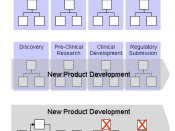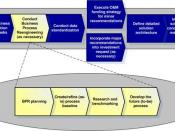EDI has resulted from the emergence of a few key technologies which have solved the tricky problem of getting different computers with different applications to talk to each other. EDI as a technology is basically very simple. You take some data, encode it into a known and agreed format, squirt it down a telephone line to a trading partner, who then decodes it and uses the data.
EDI as a Business Process Redesign Enabler
EDI can be used for the automation of existing paper transactions. Indeed, it can yield significant benefits when used in this way e.g. no paper, saved postage, less errors etc., but the real power of EDI lies in its role as a Business Process Redesign (BPR) Enabler. EDI technology makes it possible to introduce revolutionary business practices which the speed and reliability of the paper based systems make difficult.
BPR is about questioning the ability of your existing business processes to handle the rapidly changing and increasingly competitive business environment of the 90's.
In essence, the BPR approach is one of first thinking smarter (Why do we need to do that at all ?), then slicker (Do we need to do it in that way ?) and finally quicker (Can we automate it ?). The relationship between EDI and BPR is subtle. EDI technology does more than just allow us to automate, it enables us to consider the radical changes in business practice (e.g. self-billing, supplier scheduling) needed to compete in a increasingly competitive and cost focused world market.
2.0 Overview
This document is designed for those interested in the how, what, when and why of EDI. It will introduce you to the basic concepts and applications of EDI, describe how you might go about doing it and hopefully unravel some of EDI's many myths. Included...


